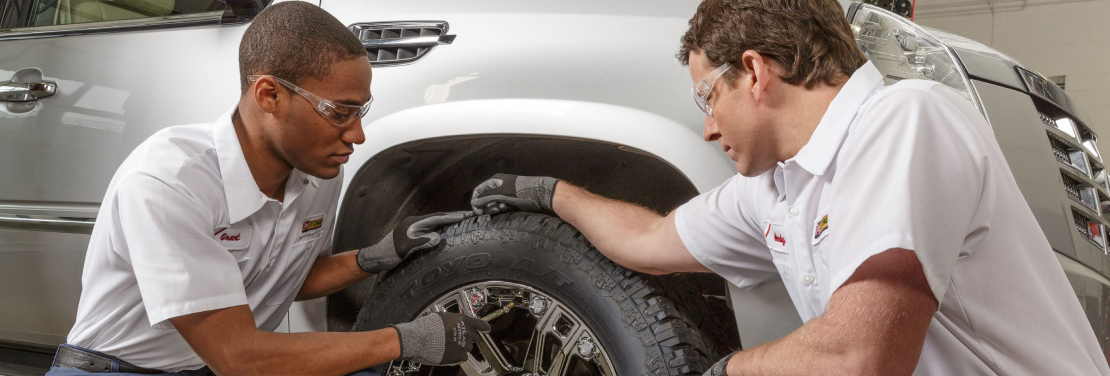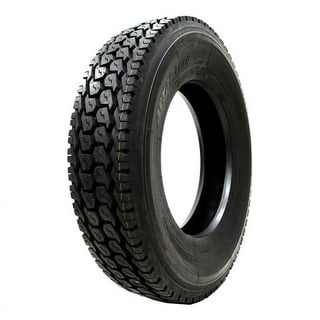Tire Service: The Effect of Weather Problems
When it pertains to guaranteeing optimum performance and safety and security when traveling, recognizing the impact of weather condition problems on tire solution is critical. From scorching heat to icy roads, each weather condition component can considerably affect tire functionality and total driving experience. By delving into the impacts of varying climate conditions on tires, drivers can acquire useful understandings that might boost their vehicle's efficiency and longevity. In this discussion, we will certainly explore the detailed connection between climate condition and tire service, shedding light on the significance of weather-specific tire upkeep methods and factors to consider.
Heat and Tire Efficiency
When subjected to high temperatures, tires experience adjustments in performance that can significantly impact car safety and security and handling. The warmth produced from prolonged driving or warm climate conditions creates the tire rubber to soften, leading to minimized step life and boosted wear.
Moreover, high temperatures can increase the process of tire aging, causing the rubber to wear away faster. This can result in splits, protrudes, and various other kinds of damages that compromise the structural integrity of the tire. To alleviate the results of warm on tire performance, chauffeurs must frequently inspect their tire stress, revolve tires to guarantee even wear, and check for any kind of signs of damages. In addition, making use of tires specifically created to hold up against heats can aid preserve ideal efficiency and security when traveling.
Winter Impacts
Cold climate problems can have a significant impact on tire performance and safety and security. In cool weather condition, tires may also lose air stress a lot more quickly, which can affect taking care of and gas efficiency.
To minimize the impacts of winter on tires, it is critical to consistently examine tire pressure and inflate them to the supplier's advised degrees. Using winter or all-season tires made for winter problems can likewise boost grip and grip on icy or snowy roadways - tire shop morris. Correct tire upkeep, consisting of routine inspections for wear and damage, becomes also more essential during cooler months to ensure optimum performance and safety and security
Rainy Conditions Effect
Tires with worn-out treads are extra susceptible to hydroplaning, where a layer of water constructs up between the road and the tire surface, leading to loss of grip. To fight this, motorists ought to on a regular basis examine their tires for adequate step deepness and take into consideration spending in tires especially made for damp problems.

Snow and Tire Safety And Security
Snow-covered roads pose special challenges for chauffeurs, emphasizing the value of proper tire option and upkeep. When driving in snowy conditions, having the right tires can make a significant distinction in safety and security and performance. Wintertime tires are created with special rubber substances and step patterns to provide much better grip on snow and ice compared to all-season tires. The much deeper treads and sipes of wintertime tires aid grip the road better, lowering the risk of gliding and sliding.
In enhancement to making use of winter tires, it is important to ensure they are effectively inflated. have a peek at this website Cold weather check out this site condition can trigger tire stress to go down, influencing traction and handling (mopar tire service specials). Regularly inspecting and keeping the right tire pressure is important for optimal performance in snowy conditions

Weather-Related Tire Maintenance
Weather-related tire upkeep encompasses an array of techniques intended at making certain ideal tire function and longevity in various weather condition circumstances. One crucial element of weather-related tire maintenance is tire stress guideline. Examining tire tread routinely and replacing tires when step wear reaches a particular depth is important for maintaining grip and stability in adverse climate.
Conclusion
Finally, weather problems have a significant influence on tire performance and safety. From warmth impacting tire pressure and use to winter decreasing grip, it is necessary to consider the climate when maintaining and utilizing tires. Rainy conditions can lower hold and lead to hydroplaning, while snow can boost the risk of mishaps if tires are not correctly equipped. Weather-related tire upkeep is essential in making certain optimal efficiency and safety when traveling.
In this conversation, we will certainly explore the complex partnership in between weather conditions and tire service, dropping light on the importance of weather-specific tire maintenance techniques and factors to consider.
